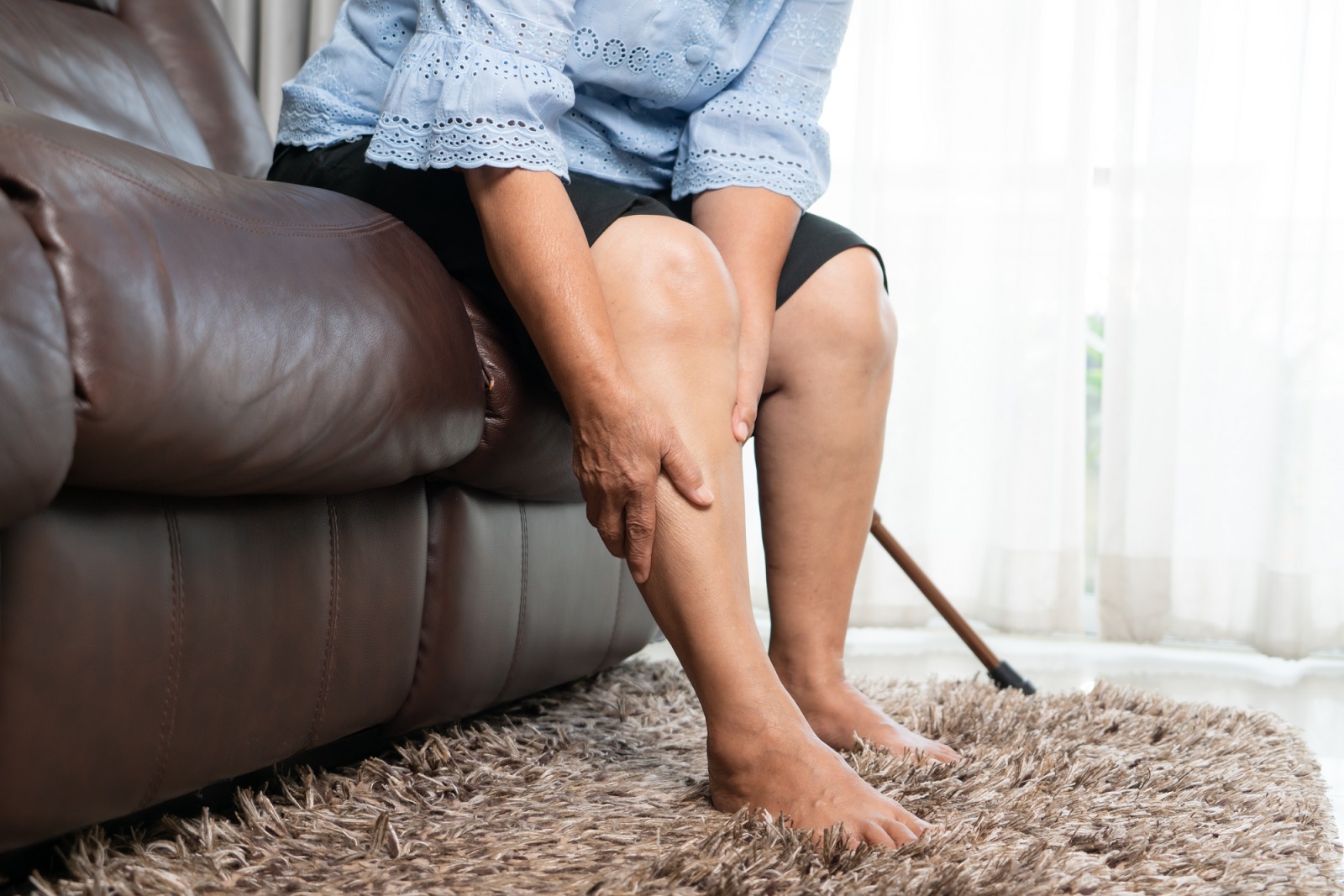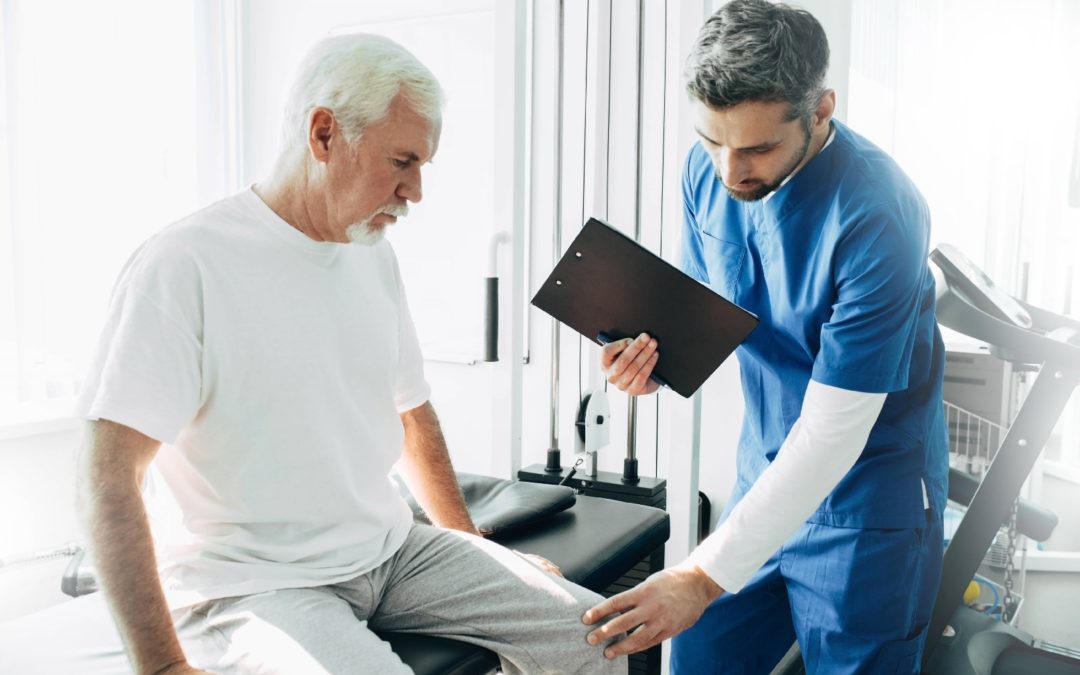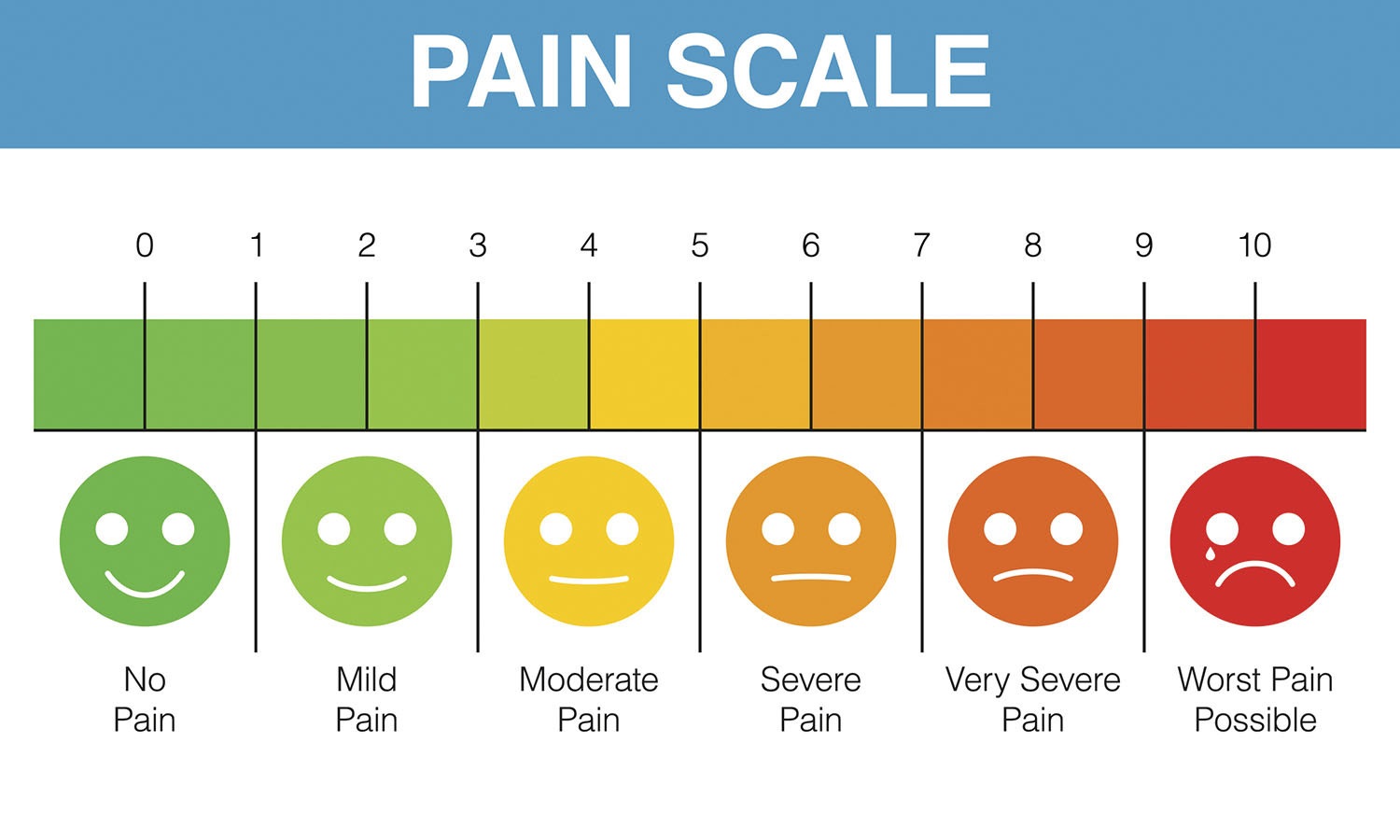Robert has been experiencing leg pain for the past six months. It started as the occasional tired feeling, as if he’d just trudged uphill for three miles in four feet of snow. But now, that tired feeling is accompanied by occasional burning, throbbing, and swelling. The problem is that Robert can’t quite describe how much pain he’s in—he doesn’t want to overstate it or understate it. He also isn’t sure what is causing the pain, so he refuses to waste anyone’s time with a trip to the doctor. Instead, he believes things will get better with time and over-the-counter anti-inflammatory drugs.
While Robert’s leg pain could improve with time, it’s more likely a sign of vein disease that can lead to life-altering consequences. The sad reality is that many people react the same way and don’t seek help. Leg pain should not be ignored, nor should you have to live with it—whether chronic or occasional, mild, or excruciating. Talking your doctors and helping them understand your leg pain leads to faster intervention and can get you back to a pain-free lifestyle.
Are You Suffering from These Leg Pain Symptoms?
- Tired, heavy legs
- Throbbing or stabbing pain
- Swelling and achiness
- Numbness and tingling
- Varicose veins
- Itching, prickling, pulling sensations
- Burning sensations in the feet
- Open sores and ulcers
- Cramping
Schedule a consultation with Hamilton Vascular’s expert physicians if you are experiencing unexplained leg pain. Appointment
What Does Your Leg Pain Feel Like?
Your family physician can help with pain management throughout the body. However, it is far more likely that if your leg pain appears to be vein related, a referral to a vascular specialist like the professionals here at Hamilton Vascular is necessary. Our physicians are board-certified diagnostic radiologists with additional fellowship training in vascular and interventional radiology. This means we can provide accurate diagnoses of venous and arterial diseases with minimally invasive non-surgical treatments for vein and artery conditions. This area of specialty is critically important considering that more than 20 million Americans suffer from some form of vein disease.
The veins are the highway system in the body through which blood is transported to your vital organs. But as we age, the valves in our veins weaken and can be affected by life choices such as diet, excess weight, smoking, and a sedentary lifestyle. As a result, they don’t work like they once did. Like anything else, the symptoms that arise show themselves in stages. At first, it may be a few unsightly spider veins and varicose veins that aren’t painful at all. But as the disease progresses, patients experience a variety of painful symptoms like the ones above.
Many patients who visit with a vascular specialist are exactly like Robert—they have mild and even occasional symptoms that are progressively getting worse with no rhyme or reason. Their level of leg pain can fall anywhere on the map, so vein doctors often employ a simple pain scale of 0 to 10 to better understand what they’re dealing with.

A pain scale is a simple way of quantifying your pain. While you may struggle with it at first, the process must be taken seriously so that your vein specialist can determine if your leg pain is improving or getting worse and which lifestyle choices or underlying conditions are potentially responsible.
Examples of poor lifestyle choices and underlying conditions that could be affecting your leg pain include:
- High blood pressure and high cholesterol
- Excessive smoking
- Diabetes
- Chronic venous insufficiency
- Not getting enough physical activity (sedentary lifestyle)
- An unhealthy diet
- Being overweight or obese
Concerned you might have vein issues? Please contact us at 866-552-4866 or complete the appointment form. Appointment
The most common pain scale is a numerical scale from 0 to 10. An example of a leg pain scale is below:
LEG PAIN SCALE
- NO PAIN — You may not be experiencing any leg pain, in which case, your treatment options may simply be a “wait and see” approach. But that doesn’t mean you don’t have a problem, especially if your leg pain comes and goes. Many underlying conditions can lead to legs that feel cold or experience sudden hair loss—but not necessarily painful.
- MILD — With this pain, the leg pain you’re experiencing is very mild and barely noticeable. Some patients may even tell their vein specialist that they don’t even think about the pain most of the time—even though it’s clearly there. Being upfront with your doctor by correctly explaining your mild leg pain will help them determine the next steps.
- MINOR — Patients often describe this pain level as annoying pain that may or may not have occasional stronger twinges, episodes, or flare-ups of leg pain. It may also make performing basic everyday tasks like walking or going up and down stairs slightly uncomfortable.
- UNCOMFORTABLE — At this stage, your leg pain is noticeable and distracting. However, you can get used to it and adapt. Perhaps your workday is impacted, but you continue to “push through” the pain.
- MODERATE — If you are deeply involved in an activity, your moderate leg pain can be ignored for more than a few minutes at a time but is still distracting. You participate in activities, but you’re having difficulty concentrating.
- DISTRACTING — We’ve mentioned the word distracting a lot so far, which is why it can be difficult for some patients to help their doctors understand their leg pain. At this pain level, there is moderately strong pain. It can only be ignored for a few minutes and is slightly more challenging than Pain Level #4.
- DISTRESSING — At this pain level, you’re beginning to worry that something is wrong and needs to be addressed. This leg pain interferes with normal daily activities and limits your ability to concentrate on anything else.
- SEVERE — This leg pain level is characterized by pain that dominates your senses and limits your ability to perform daily activities or maintain social relationships. It also interferes with sleep, such as Restless Leg Syndrome (RLS).
- INTENSE — Physical activity is severely limited, and conversing requires great effort. At this level, your leg pain is about all you can think about, and you just want it to go away as quickly as possible.
- EXCRUCIATING — This is the type of hand pain that causes you to cry out and or moan uncontrollably. You are unable to converse and explain the pain.
- UNSPEAKABLE — This pain level is reserved for those patients who are bedridden because of their leg pain and possibly delirious from the pain. Very few people will ever experience this level of pain.
Pitfalls with Communicating Leg Pain
Some patients make a mistake when trying to rate their pain because they overstate their pain level. There may even be a temptation to exaggerate to spur the vein doctor to action quicker, which generally happens like this.
- Saying your pain is a 12 on a scale of 0-10 — While you may simply be trying to convey the severity of your pain, the specialist hears exaggeration and will not be able to manage your pain appropriately.
- Smiling and conversing with your doctor, then saying your pain level is a 10 — If you can have a normal conversation, your leg pain is not a 10.
The bottom line is that many of us ignore leg pain and believe it will go away on its own. Then there are others who overstate their pain. Visiting with a vein specialist and helping them understand your leg pain can get you back to living the life you deserve quickly and in the least invasive ways possible.
Hamilton Vascular Can Help You with Chronic Pelvic Pain
It’s important to seek help from the right vein care center with a team of professionals that can guide you on your next steps to improving and/or eliminating your leg pain. Hamilton Vascular has long been a leader in performing leading-edge procedures to treat a variety of leg pain issues and vein diseases and diagnose the underlying cause of your condition.
The vascular physicians at Hamilton are board-certified diagnostic radiologists with additional fellowship training in vascular and interventional radiology. If your veins need treatment, or you need a vein screening, the experts at Hamilton will recommend an individualized plan to help you get the best results.
Most major medical insurances and Medicaid cover the cost of leg pain treatment cause by vein issues. Request an appointment for an evaluation to discuss your options. For a consultation with one of our specialists, please contact us at 866-552-4866 or complete the appointment form appointment form.
AppointmentPrior to starting any new treatment or questions regarding a medical condition, always seek the advice of your doctor or other qualified health provider. This information is not a substitute for professional medical advice.
Hamilton Vascular serves the South Texas area including Houston, San Antonio, Austin, Round Rock, Bastrop, Brushy Creek, Cedar Park, Converse, Georgetown, Hutto, Kyle, League City, Leander, Marble Falls, New Braunfels, Pasadena, Pearland, Pflugerville, San Marcos, Schertz, Sugar Land, The Woodlands, Universal City and more.


